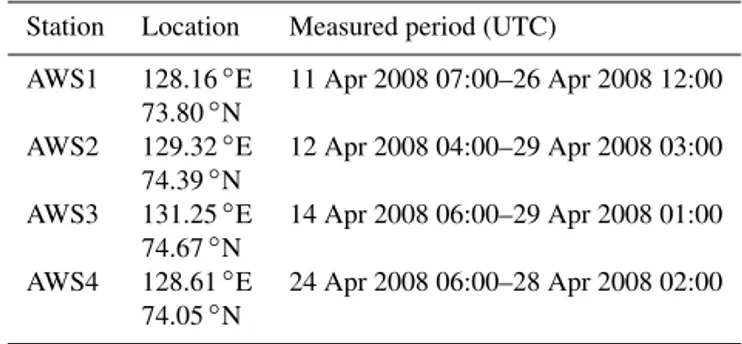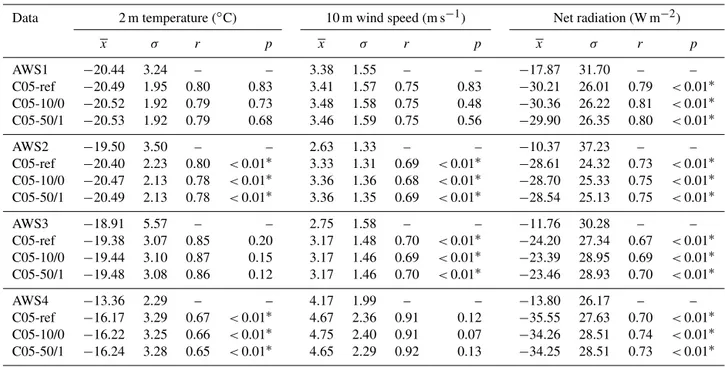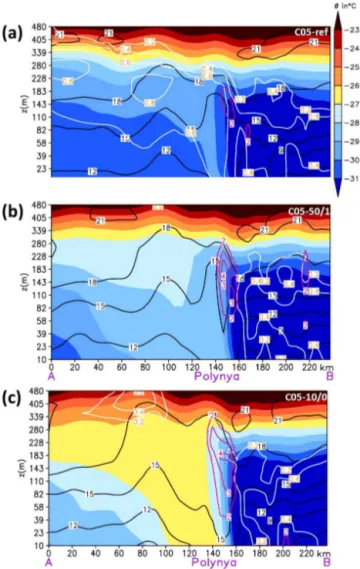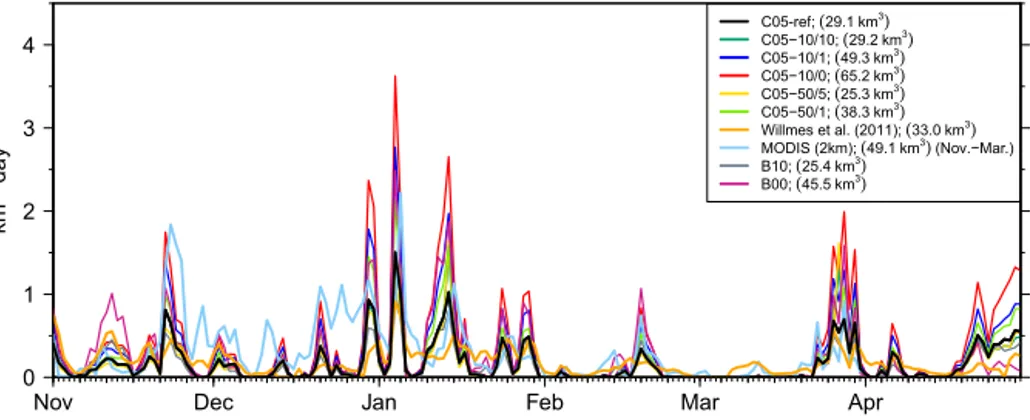Quantification of ice production in Laptev Sea polynyas and its sensitivity to thin-ice parameterizations in a regional climate model
Texto
Imagem
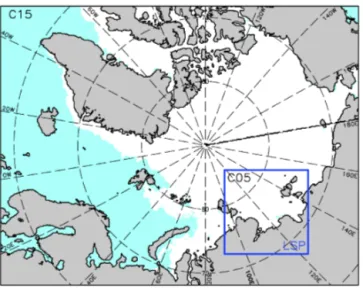


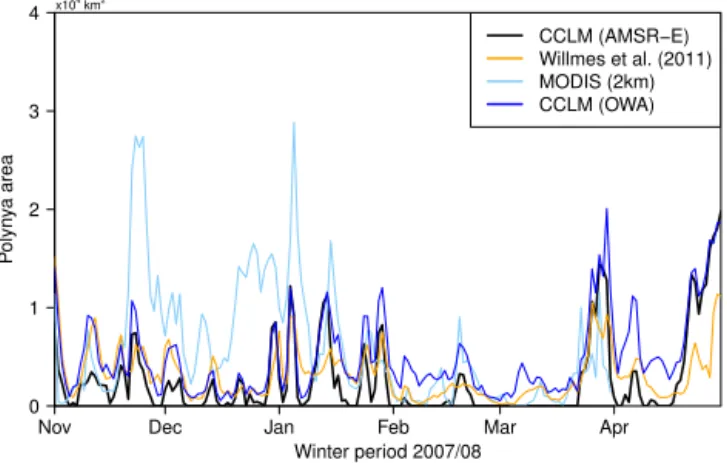
Documentos relacionados
The top 2 cm section of the sea ice had relative high bulk salinity on 20 January (Fig. 3) likely due to the granular nature of the sea ice in this part of the core creating
In order to study the sensitivity of this eect on the radiative characteristics of the ice cloud, two types of additional ice clouds were modelled: cirrus and contrails, the
4, we finally compare the magnitude and pacing of past temperature changes reconstructed from deep ice cores to the changes simulated by coupled ocean-atmosphere-sea- ice models
The reconstructions are based on a multilinear regression of forecasted ice concentration, level ice thickness, ridge density, ice speed and an additional factor which is based,
This may be a consequence of the very high sea-ice di ff usivities (SID) that have been allowed in the ensemble leading to increased brine rejection and AABW production. + 0.83 in
We were able to reproduce the results of the granular model using both the modified Coulombic yield curve of Hibler and Schulson (2000) and the elliptic yield curve of Hibler
study sites, the relative proportions of yedoma and alas coastline segments are highest in favor of non-degraded yedoma at Mamontov Klyk, representing a large pool of clastic
To investigate the influence of snow depth, sea ice density, and area on sea ice thick- ness and volume estimates we use freeboard retrievals from ICESat, together with dif-
